Columbia, Md. Stormwater Detention Basin Rehabilitation
Columbia, Md. | Commercial | Stormwater System Repairs
Overview
A healthcare facility with stormwater assets draining into the Patuxent River faced Notices of Violation (NOV) due to severe sedimentation compounded over years of lack of maintenance on the detention basin.
Problem:
A commercial healthcare office complex in Columbia, MD, built nearly 40 years ago, had a rude awakening when the local municipality issued a Notices of Violation (NOV) for their stormwater detention basin. As a result, the aged construction faced severe sediment build-up, erosion, and corrosion of structures while experiencing extended water retention beyond the recommended exfiltration rate.
With the pressure of an NOV and an upcoming annual inspection looming, the Property Owner understood the situation’s urgency and contacted AQUALIS. By acting as a liaison between the Property Owner and regulators, AQUALIS extended the 60-day rehabilitation deadline initially required by the NOV to minimize fines imposed on the property and allow for careful planning, implementation, and completion of the NOV rehabilitation project.
Environmental impact on the local watershed also contributed to the impending sense of urgency. This site’s outlet drains directly into the Patuxent River, a tributary of the Chesapeake Bay and notable waterway monitored by the Maryland Department of the Environment (MDE). This river is one of many classified by the MDE as impaired, with water quality too poor to support local habitats, recreational activities, or contribute to the public water supply. What was determined to be the main contributor to this degradation? Polluted runoff from the high amount of impervious surfaces in the streams’ watershed. While just a single piece in an intricate puzzle impacting water quality, this site’s stormwater system’s efforts directly impact the sensitive Patuxent River and larger Chesapeake Bay region.
The repairs were extensive. The NOV required serious basin-wide erosion remediation and repairs to one of the Inlet concrete-formed aprons. The damages noted were likely due to unplanned runoff paths and flow rates caused by blockages from long-term untreated sedimentation. In addition, substantial sedimentation was recorded within the basin, particularly around the low flow structure, infiltrating into the riser structure and piling outside the outfall point.
AQUALIS classified this project as a rehabilitation due to the extent and severity of restoring the system based on the NOV requirements and compliance standards.
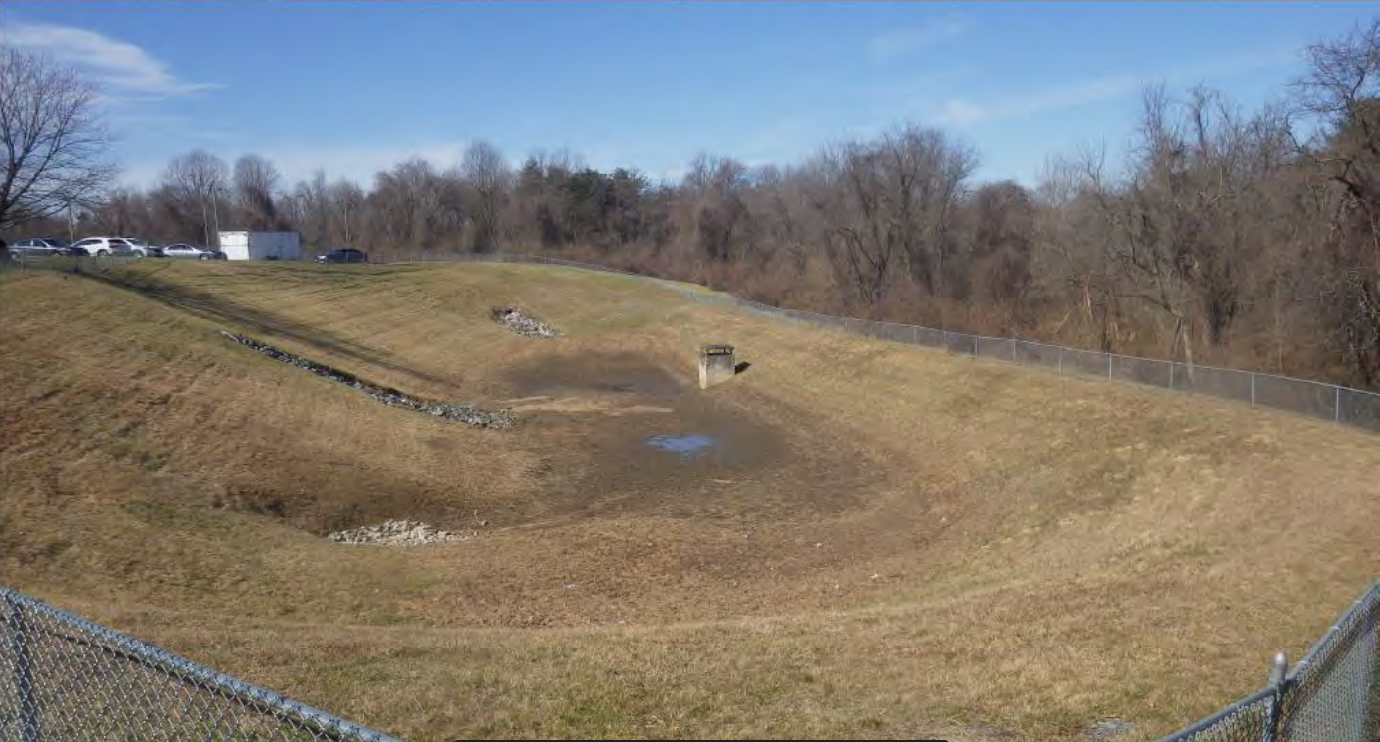
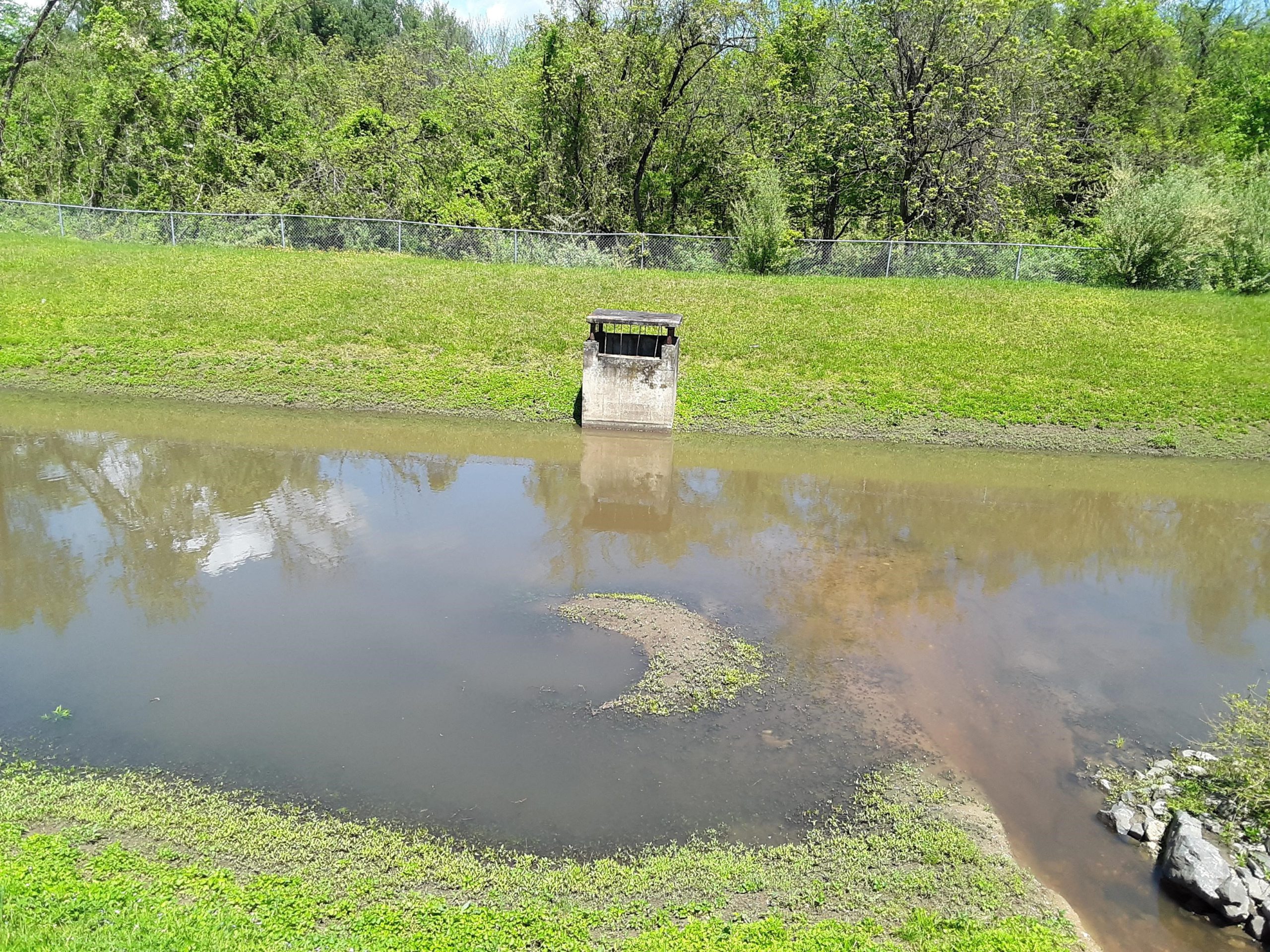
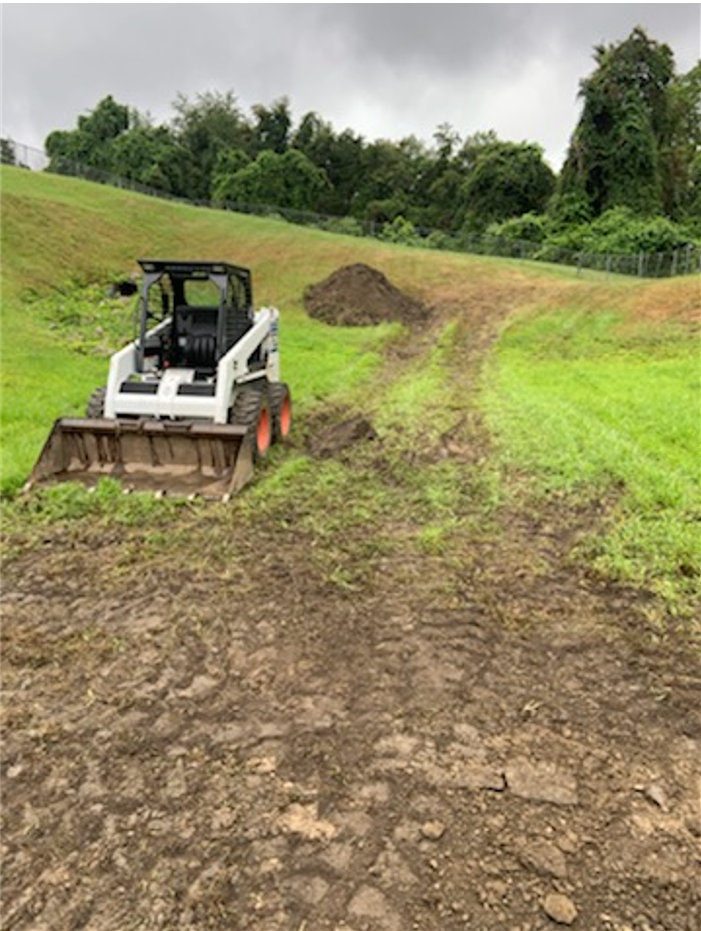
Sediment Removal
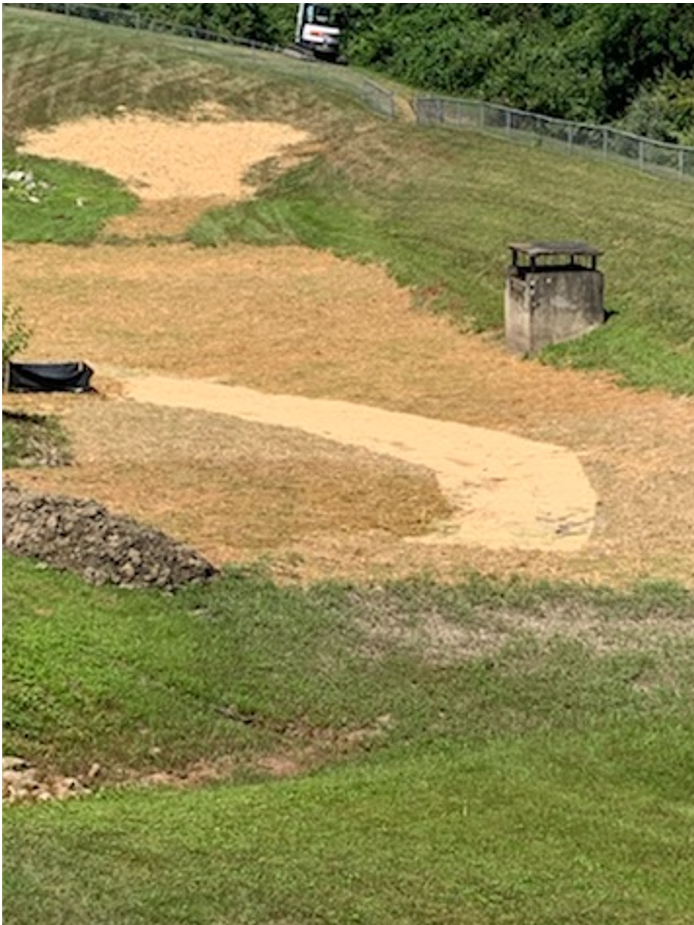
After: Sediment removal, reseeded and straw inlay
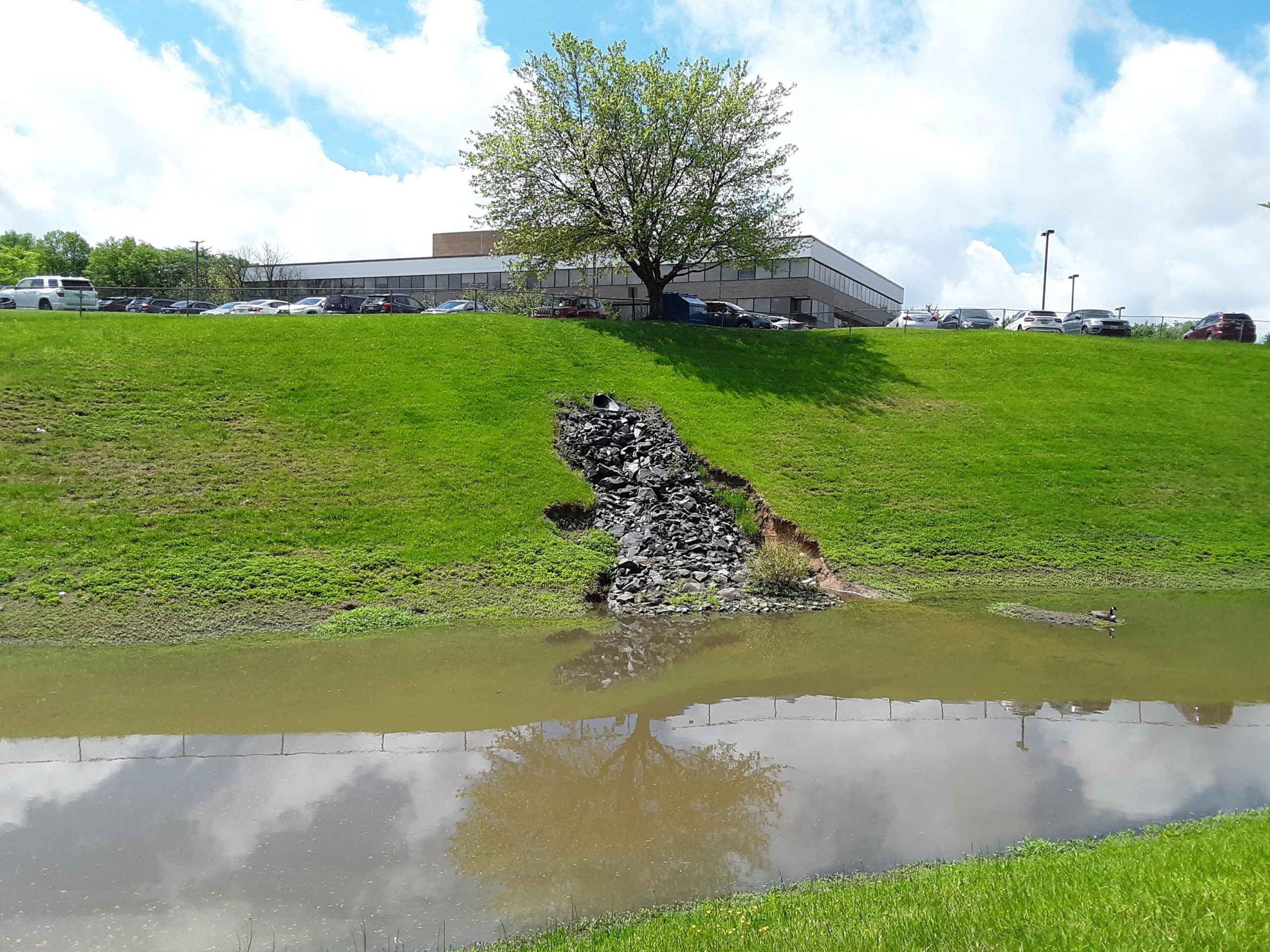
Before
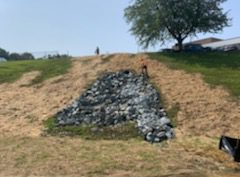
After
Solution:
AQUALIS begins each rehabilitation with thorough research and communication to compile a complete analysis and further understand the complex requirements of each municipality. In this case, historical data was requested from the local city to assist in the proper application, approach and direction for the project’s scope. This crucial step allows AQUALIS’ team to evaluate the project’s big picture and ensure the appropriate methodology for remediation. Throughout the entirety of the rehabilitation process, from research through completion, AQUALIS’ certified stormwater professionals worked with the Property Owner, offering comprehensive scopes of work, progress reports, and continual open communication to ensure a seamless process.
The rehabilitation process began by de-watering the basin to ensure a full system assessment and offering a safe work environment for those on-site. Next, the basin was dredged and excavated to restore elevations within compliance with the provided and approved plans and stabilized with topsoil, wetland seed mix blend and erosion control matting.
The AQUALIS team reestablished the proper slope gradient around the inlets with supplemental rip rap and compactible fill material added to guide stormwater runoff down the intended path, minimizing erosion in the future. However, severe erosion was indicated at one inlet that, likely due to bypassing a damaged concrete flared end section (FES), had the flowline corrected and slope stabilized once a new FES was poured.
AQUALIS confined-space entry professionals entered the structure and removed the sediment by hand to reestablish flow patterns within the low flow riser. While inside the structure, the team noted separation and went to work on the correction, along with the low flow trash rack repairs and securement. AQUALIS’ confined-space entry certified professionals also entered the OCS riser to remove sediment present and perform a visual inspection. Next, the team identified all separated joints or notable leaks to properly seal before the corroded rebar riser top slap supports were individually removed and replaced with new sealed rebar.
Finally, all areas disturbed by machinery during this project were graded and smoothed, with fescue blend seed mix added and covered with erosion control matting.
With the site now functioning as designed, AQUALIS communicated all updates and completion to the local inspector to satisfy the parameters of the issued NOV. The assets are now established and approved by the city decreasing any further the risk of contaminating the Patuxent River. Stormwater runoff can now infiltrate the system and flow as designed to settle contaminants that were previously impacting the local watershed. While costly fines are a driving factor for business owners understanding the greater scope and environmental impacts further reinforces the need for cooperation and awareness of stormwater assets.
Learn more about the rehabilitation process and how to act in the name of environmental sustainability here.